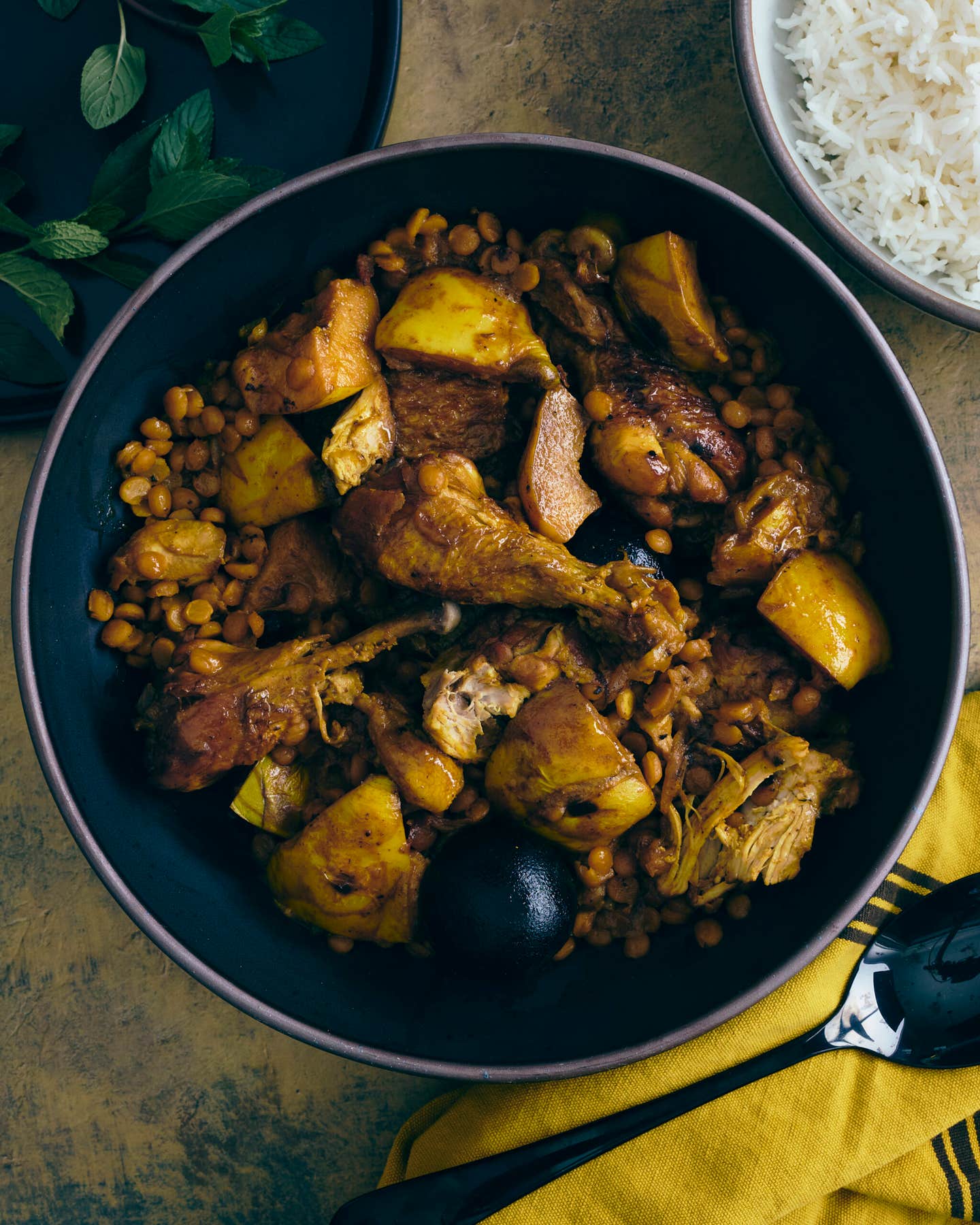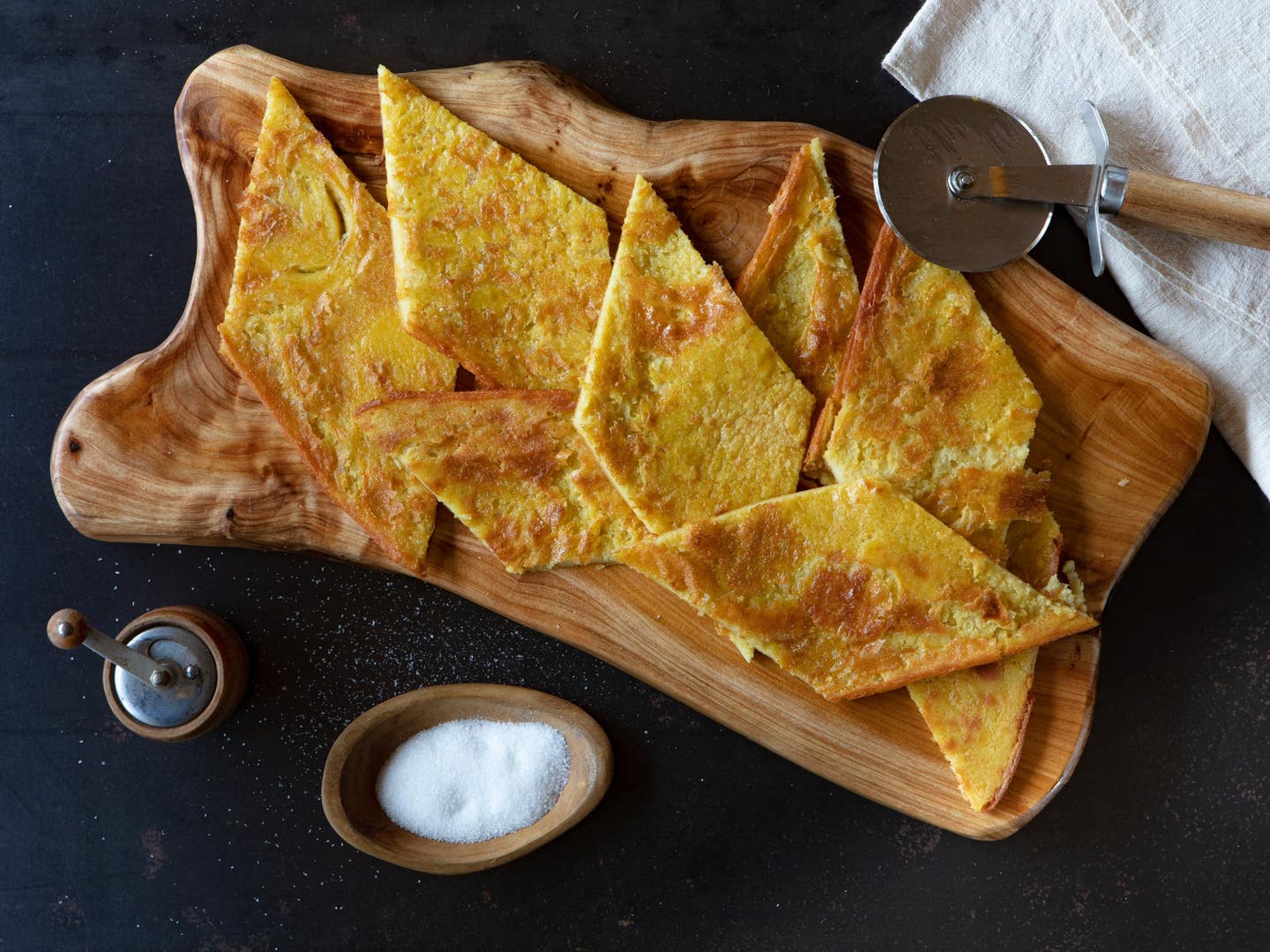
Liguria Author Laurel Evans Makes a Damn Good Pesto
This cookbook is a love letter to the cuisine of the Italian Riviera.
Texas-born Laurel Evans is living la dolce vita. After falling in love with her now-husband, the Italian photographer Emilio Scotti, Evans moved to Milan and began to write recipes and stories in Italian about American cuisine for her blog Un’Americana in Cucina. For the last 15 years, she’s spent summers, winters, and weekends at her husband’s familial home in Moneglia, a coastal town in Italy’s northwestern region of Liguria.
In this month’s selection for the SAVEUR Cookbook Club, Liguria: Recipes from the Italian Riviera, Evans introduces the region’s cuisine to an American audience, with stunning photography by Scotti. The book features more than 70 traditional recipes, from latte fritto to fritto misto, and pandolce to pansoti. Though most Americans have certainly heard of pesto and focaccia (Liguria has recipes for both), delights like corzetti (decoratively-stamped pasta) and salvia fritta (fried sage leaves) haven’t yet made their way into most home kitchens in the U.S. The unsung wonders of Liguria’s beautiful, vegetable-forward cuisine have been largely overshadowed by other styles of Italian cooking. Though many Americans have a certain homogenized perception of Italian cuisine, Italy’s status as a relatively new country (its states were unified in 1861 before becoming a republic in 1946) means that many Italians identify first and foremost with their specific region, city, village, or even neighborhood, rather than the country as a whole. Known as campanilismo, this local identity and patriotism has led to distinct culinary traditions within each of Italy’s 20 regions, and even among neighboring towns. The concept of “Italian” food in the U.S.—stemming from immigration, tourism and the romanticization of certain regions—often glosses over these regional differences.
“Liguria is made up of hills and mountains, mountains that plunge into the sea. There aren't a lot of wide plains for growing wheat that one can then sell. Farmers have to eke out every square centimeter of space to grow food. But this difficult existence gave birth to this genius cuisine, which makes something out of nothing.”
Evans animates the campanilismo of Liguria through the voices of locals, featuring focaccia experts, shopkeepers, and the masters of every Italian kitchen: the nonne, or grandmothers. “I hope that this book will have some small part in helping Liguria become a culinary destination,” says Evans. “[The region] has an incredibly rich, dense and beautiful food culture that deserves to be explored.” We spoke with Evans about the history of Ligurian cuisine, grandmotherly cooking, and tips for making superlative focaccia stateside.
The following has been condensed and edited for clarity.
In Liguria, you laud the fact that Ligurians are inherently waste-conscious. How so?
The food of Liguria developed over a very long history, and it was a very slow evolution. Because the geographic shape of the region is so long and skinny, it touches a lot of different cultures. It's very influenced by France on one side and by Tuscany on the other. There are some parts of Liguria that were very, very wealthy throughout the Middle Ages. Genoa was an international hub during the Renaissance—a center for commerce and trade of goods, like exotic spices and sugars. But most of Liguria was very poor, especially in the countryside. So, the most traditional recipes of the region developed from a mentality of frugality. It's interesting to see this blend of over-the-top, baroque recipes from Genoa—like a crazy seafood tower with lobsters—and humble, rural recipes like the verdure ripiene, which are an example of farmers trying to make a meal out of vegetables by stuffing them with whatever they had in their pantry. So, interestingly enough, that mentality of thrift and not being wasteful permeated society, even at the upper echelons. Even today, some of the wealthiest aristocratic families in Liguria still shiver at the thought of throwing away food. They'll still make a torta di riso with the leftover rice from the night before. It's ingrained in their heritage.
Historically, farmers were very poor because there's not very much farmland. Liguria is made up of hills and mountains, mountains that plunge into the sea. There aren't a lot of wide plains for growing wheat that one can then sell. Farmers have to eke out every square centimeter of space to grow food. But this difficult existence gave birth to this genius cuisine, which makes something out of nothing.
What’s the number one Ligurian trick for making something out of nothing?
Ligurians have an incredible penchant for stuffing things. Ravioli is a great example. The Genovese claim to have invented them, which is probably not true, but they're very proud of ravioli and have been making them for a long time. They also make stuffed anchovies, stuffed squid, stuffed zucchini flowers, stuffed vegetables, stuffed peaches for dessert. Once you stuff a food, it becomes a meal. And what do you stuff it with? You stuff it with stale bread that you soak in milk in order to soften it up. Or you throw an egg in there. Or you put in any sort of leftover meat that happens to be lying around. If you don't have meat, you put a little anchovy in there to boost the umami. I kept encountering this technique over and over again in Ligurian cuisine. One of my favorite dishes is lattughe ripiene, or stuffed lettuce. First, you blanch the lettuce leaves, then fill them with a mixture of breadcrumbs, Parmigiano, and meat, if you have it. Then you serve it in broth, so it's almost like a soup, but it's very, very delicate. And all you need is some wilted lettuce, some leftovers, some bread crumbs, and an egg. Now, when I look in the fridge, it's not just about what pops out to me, it's about what I have and what I can stuff it with to make a meal.
They stuff everything so that even their guests are stuffed.
Ha! Well keep in mind that portion size is another thing that's very important in Italy. You will actually hear people complain at the end of a meal if they feel too full. It's very important that restaurants and your host get the portions right, so that you leave feeling full and satisfied, but not stuffed and sick. But you do need to have enough food and different dishes on the table to justify staying at the table for a long time. Eating and being at the table are so important in Liguria, and Italy in general. Italians like to sit around the table and enjoy. So the pacing of the meal is also very important. Italians will complain for hours if the waiter takes their plate away too early. A Sunday lunch can easily last five, six hours—with a lot of wine, of course.
So how would you recommend curating a full Italian meal from Liguria?
The full expression of the Italian meal—which isn’t so common in everyday life—is antipasti (appetizers), primi (first courses, which are made up of risotto, pasta, or soup), secondi (second courses, which are typically meat- or fish-based), and then dolce (dessert). But it’s very common to structure a meal as antipasto, primo, secondo—or just antipasto and primo, or just primo then dolce. So I would suggest keeping portion sizes in mind depending on the number of courses. Even if you’re starting with the salvia fritta and you know your guests are going to love it, make enough so that each person can have a handful of them, not a whole plate. Otherwise, by the time you get to the secondi, they're going to be green around the gills.
I noticed that the Secondi section of the book is quite small.
So that was not just a personal choice, I promise. It's because meat is very scarce in Liguria. There just isn’t land for breeding cattle. The meat Ligurians do eat is usually from small animals like rabbits. They're small, don't take up much space, can easily live on a hillside, and mature quickly. Plus they breed like...rabbits. So in Liguria, meat is used sparingly, like a flavoring, rather than the center of the dish. In the Secondi section, you'll find tomaxèlle, which are very thin slices of veal or beef that are stuffed and rolled up. It’s again a way to use a very small amount of meat to make a very substantial second course. And after so many substantial antipasti and primi, the secondi is just not as highly considered.
Speaking of foods that are highly considered, focaccia is on the cover of the book.
Focaccia is the most iconic food of Liguria, along with pesto. Ligurian focaccia is so different from what it tastes like in the States. It's not this bready, spongy product. It's flat and a lot thinner than the stuff you find in America. It's crunchy on top and soft inside. The holes are a little bit creamy. It's oily and salty. It's a little bit sweet. It's really a perfect product. You'll notice that it’s the longest recipe in the book, because I explain everything in intense detail. I’m very picky about how recipes are written, and it's very important to me that my recipes work. But focaccia is a very difficult recipe to write because as with all yeasted, leavened doughs, touch is so important, and there are so many variables. The flour, the water, the elevation, the oven. So I tried to incorporate all these tactile signals into the recipe. I went to focaccia expert Ezio Rocchi, and he showed me the special technique of making the holes with your fingers positioned flat. Based on our conversations, I developed this recipe with Italian flours. But I wasn’t done because I needed to make the recipe work with American flours. Since I wrote this book in spring and summer of 2020, there was absolutely no flour. I tried to order it online. I even wrote to the people at King Arthur to see if they would ship it to me under special circumstances. But there was no flour. So I eventually got all of my friends and a recipe tester in the States to test it. So this recipe really was a labor of love.
Focaccia is also important in Liguria because it’s part of the standard savory breakfast. It sounds horrible, but Ligurians dip their slice of focaccia in their cappuccini. But believe me, it’s amazing. The flavors actually go so well together.
I actually have a Ligurian friend who dips onion focaccia in espresso.
Eek, that's hardcore.
Do you have any tricks for making true Ligurian focaccia?
First off, it's not for the faint of heart. It's long, it's involved, it takes time. And it might not come out just right the first time. But when you do get it, it’ll be Ligurian focaccia like you’ve never tasted in the States. One of the secrets is the brine. Before you put the dough in the oven, you make the holes in the focaccia and then you pour over way more salt water than you think you should. You're, like, drowning your focaccia in a saltwater solution, and it seems like it’s never going to work. Then you put oil on top and pop it in the oven. That salt water gets absorbed by all the little holes and it creates that creamy texture. Also, the brine creates vapor which helps with the rise, and the layer of salt that remains on the surface makes that salty, crunchy golden layer on top. When you pull it out of the oven, you need to brush it immediately with more olive oil. Next, you eat it and die of pleasure.
What kind of olive oil do you recommend for the recipe?
So, obviously you want to use a Ligurian oil. It’s some of the most prized oil in Italy because it uses Taggiasca olives, an exceptional cultivar that’s traditional in the region. It’s a somewhat small production, so it's going to be more expensive than your run-of-the-mill extra-virgin olive oil, but the flavor is amazing. For the focaccia, though, very few people use Taggiasca olive oil within the dough. Since it’s going to be baked, you’ll lose the flavor profile, and it would be a waste. You can use basically any olive oil in the dough. But if you can, you should absolutely use Ligurian Taggiasca oil to brush the top when the focaccia comes out of the oven.
You said earlier that pesto is also one of the most iconic foods of Liguria.
Yes, especially when it’s made in a mortar and pestle. The texture and flavors that come out of the basil are unparalleled. You're not heating up the leaves like you would when you use the metal blades of a mixer, so it doesn’t oxidize, and the flavor stays very clean. All of the oils from the basil emerge and stay pure. Pesto inspires a kind of fervor among Ligurians. They’re very proud of it.
So every time someone makes pesto out of kale, there’s a nonna rolling in her grave.
Oh, absolutely. And for most Ligurians, no pesto will ever be as good as that of their grandmothers. The food is so interlaced with memory and nostalgia that even if your grandmother made the worst pesto in the world, that will be the flavor profile you want in your pesto forever. So I don't make pesto like anybody's grandmother. But do I make a damn good pesto? Absolutely.
Recipes
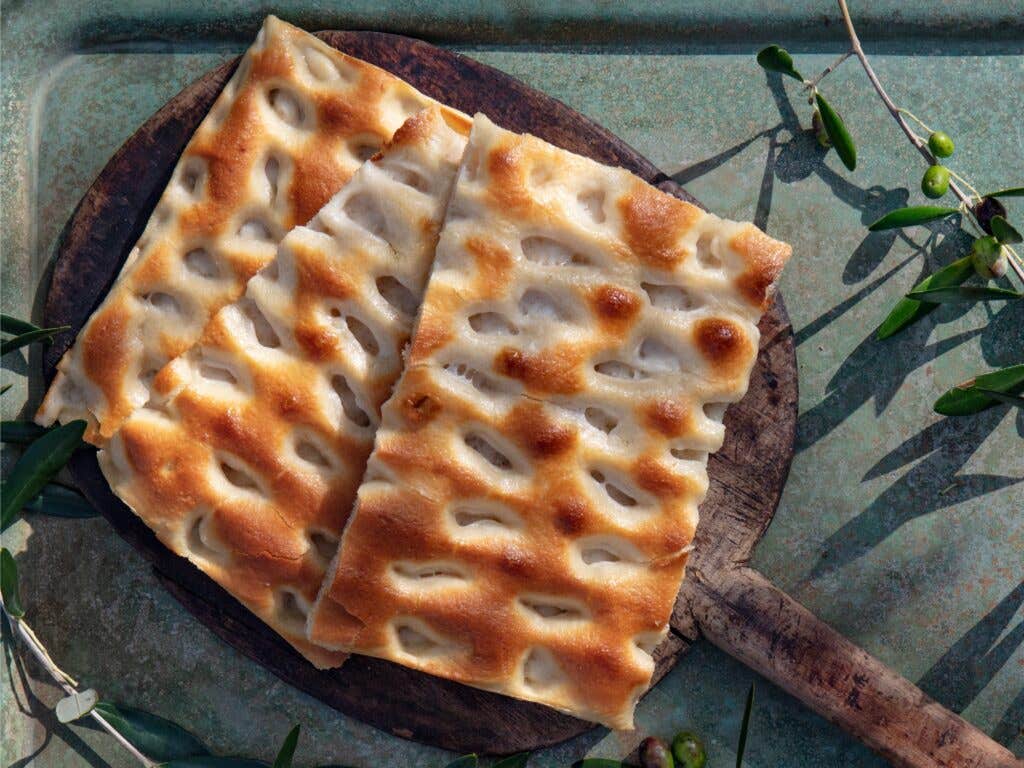
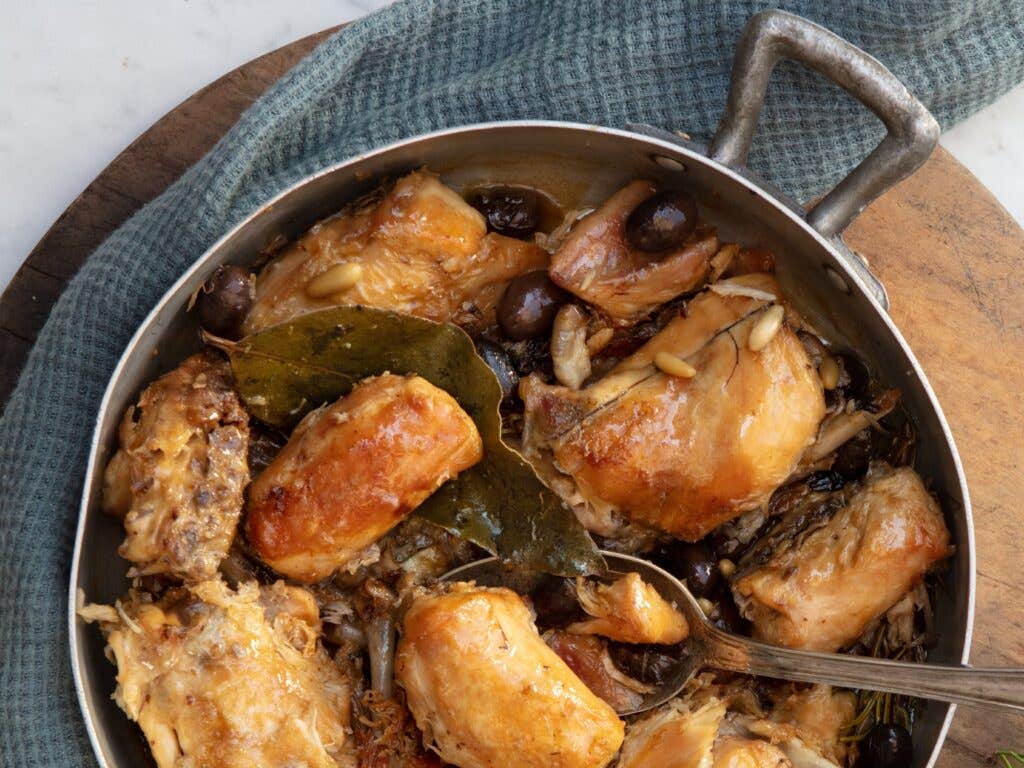
Read More
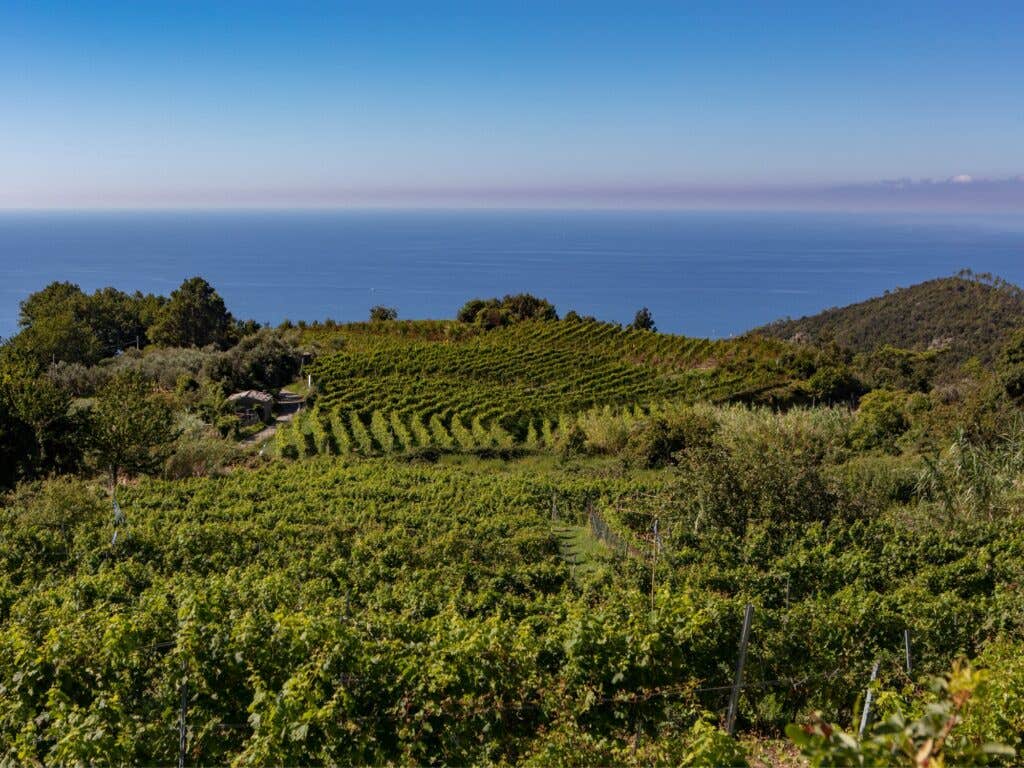
Keep Reading
Continue to Next Story









